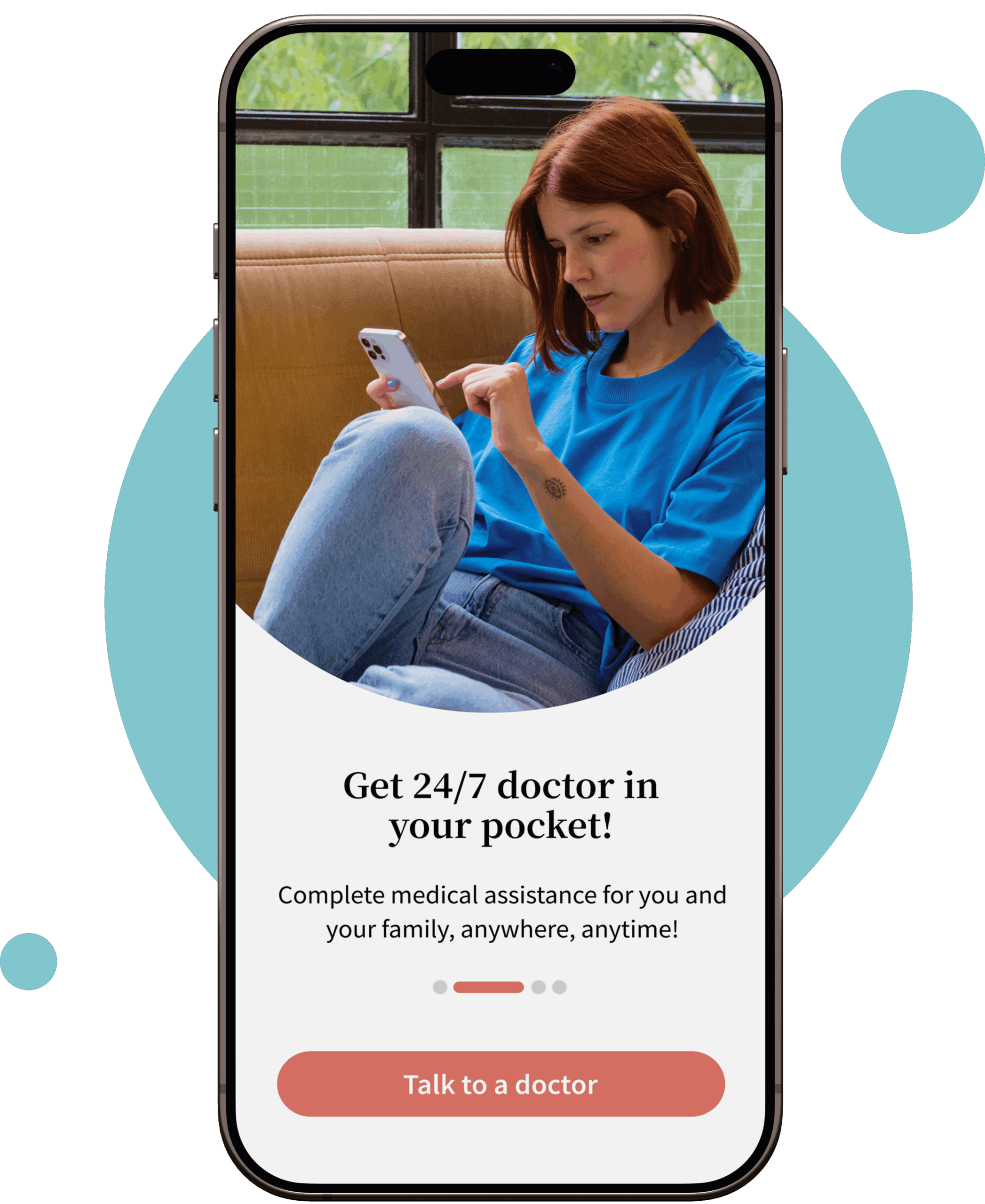Overview
Clindamycin is a widely prescribed antibiotic to treat dental abscesses and oral cavity infections. It is prescribed due to its effectiveness in treating tooth-related infections. Clindamycin for tooth infection is very effective in targeting dental abscesses. It is one of the best antibiotics for tooth infections, including dental abscesses and cavities. It starts working within 1-2 days after taking the medication. It’s not an over-the-counter medication and can only be prescribed to you in case of dental infections. If you are looking for Clindamycin for tooth infection or require more details regarding dental abscess medication, you have come to the right page.
What are the benefits of taking Clindamycin for a tooth infection?
Clindamycin is effective against various bacteria, including the Streptococcus species, which are a common cause of dental infections. It is well-known for its effectiveness; patients typically experience marked improvement within the first few days of treatment.
Clindamycin is an alternative treatment option when penicillin-based antibiotics are ineffective or when resistance has developed to other antibiotics, thereby lowering the risk of antibiotic resistance.
Clindamycin is an antibiotic in the lincosamide class that kills bacteria by blocking their ability to make proteins. The mechanism by which clindamycin works makes it effective against many different types of bacteria, including streptococci, staphylococci, and anaerobic bacteria that commonly cause tooth infections. Some of the important and initial benefits of clindamycin uses are :
In some cases, tooth infections may be caused by bacteria that are resistant to other commonly prescribed antibiotics. Clindamycin, however, has demonstrated effectiveness against antibiotic-resistant strains, such as methicillin-resistant Staphylococcus aureus (MRSA).

Are you dealing with a painful tooth infection?
Clindamycin may be the right antibiotic for fast and effective relief. Talk to one of our doctors at Your Doctors Online.
Talk to the doctor now before it’s too late!Clindamycin’s ability to reach deep into the affected tissues is a major benefit. Infections in teeth can spread to the gums, bones, and even the soft tissues of the face. Because of its superior tissue penetration, clindamycin effectively treats these infection sites and speeds up healing.
Inflammation and pain caused by tooth infections can significantly impact a person’s quality of life. Clindamycin can reduce these symptoms by eliminating the source of the infection. Its effective management allows patients to feel better and return to normal routines.
Clindamycin also effectively reduces the spread of an infection from one part to another. Due to this benefit, it is often preferred over other antibiotics for a number of infections.

Clindamycin can penetrate deep into infected tissues for faster recovery.
Speak with Your Doctors Online for an immediate prescription and start feeling better soon.
Get Immediate Consult and Prescription!How long does Clindamycin take to work for bacterial infection?
Patients usually feel better within 72 hours of starting the initial treatment. However, the length of time that clindamycin takes to work can vary depending on the severity of the infection and the individual’s response. Even if your symptoms improve before the end of your antibiotic treatment, you should still take all of your pills as directed by your dentist.
Is it possible to be allergic to Clindamycin?
In the case of a clindamycin allergy, the most prominent symptoms will be :
- Rash
- Itchy hives
- Diarrhea
- Vomiting
- Dizziness
- Trouble breathing
- Swelling around throat
- Abdominal cramps
Seek immediate medical attention if you experience symptoms of an allergic reaction. Anaphylaxis shock is possible with Clindamycin and can be life-threatening. Anaphylactic reactions to Clindamycin are uncommon, but if you notice any such symptoms, seek immediate professional help.
What is Clindamycin dosing for dental infection?
Clindamycin 300 mg dosage for tooth infection is commonly prescribed. The dose for adults can lie between 300 and 600 mg. Clindamycin HCl for tooth infection is to be taken every 8 hours. Dosing time, frequency, and dose also depend on the individual’s age and severity of the infection. It is always recommended to complete the dose for the prescribed period to treat the disease completely and avoid the development of antibiotic resistance.
What are the possible side effects of using Clindamycin?
Clindamycin is classified under pregnancy category B drugs and is considered safe to use in pregnancy or while breastfeeding. However, normally, it may have the following side effects that can vary from person to person:
- Sickness
- Diarrhea
- Vomiting
- Reduced appetite
- Stomach pain
Once treatment is finished, these side effects typically disappear. However, if you experience severe or ongoing discomfort, you should immediately see your dentist or doctor.
What other medications can be used for tooth infection?
Some of the other medications used for tooth infection can be :
- Amoxicillin
- Penicillin
- Metronidazole
- Cephalexin
- Erythromycin
- Azithromycin
The right and well-suited medications can only be determined by your healthcare providers after a brief discussion of your symptoms and consultation with your healthcare provider.

Clindamycin is highly effective, especially for infections resistant to other antibiotics.
Connect with a doctor now through Your Doctors Online and get the prescription you need to find relief.
Consult Now for Fast Treatment Now!Consult a doctor
Clindamycin is considered one of the best options for treating teeth-related infections due to its effectiveness and limited side effects. For an accurate diagnosis and treatment of tooth-related infections, get connected with an online doctor.
FAQs about Clindamycin for tooth infections
No, clindamycin does not belong to the penicillin class of antibiotics. It belongs to the class of antibiotics known as lincosamides.
Clindamycin side effects mostly end as soon as the treatment ends. However, some side effects may last for a couple of days. Seek medical attention if your side effects do not go away.
Clindamycin rarely causes tiredness or drowsiness. However, you should see a doctor if you find yourself excessively fatigued or if you have any other concerning symptoms.
The ideal time period is between 7 and 14 days, but your dentist will decide. Clindamycin treatment duration is conditional on the seriousness of the infection being treated.
Clindamycin may cause gastrointestinal distress if taken on an empty stomach. Clindamycin side effects can be reduced if you take the drug with food.
Clindamycin is similar to Amoxicillin in its effectiveness in treating tooth infections. Moreover, it can be used safely in individuals who have penicillin allergies.
Clindamycin is generally considered a safe drug and is even prescribed during pregnancy and to breastfeeding mothers. However, it can cause gastrointestinal side effects in some individuals.






